The post Come and meet s::can at SIWW 2018, Singapore appeared first on The Source.
]]>From 8-12 July 2018 the Singapore International Water Weeks takes place. SIWW is considered one of the most important global platforms to share and co-create innovative water solutions.
Take you chance to see s::can systems at our partners’ booths and to meet our owner and president Andreas Weingartner personally.
To see the pipe::scan, our newly developed, highly innovative sensor system for monitoring drinking water quality in pipes under pressure, visit SUEZ at booth no. B2-J20. To find out more about the pipe::scan beforehand, click here.
Come by our local sales partner TriTech’s booth no. B2-L29 and see our micro::station for online monitoring of drinking water quality.
Meet s::can’s owner and president Andreas Weingartner:
On Monday, July 9, he will be a Poster Judge. Find him from 3.30pm – 5.30pm in the Foyer on Level 3.
On Tuesday, July 10, Andreas will speak about “Identification and Management of Industrial Wastewater Emissions by Smart Sensing and Real-time Communication” in the Technical Session on Sensors for Smart Wastewater Management. Find him from 4.00pm – 5.30pm in room Cassia 3303 on Level 3.
On Wednesday, July 11, he is going to present “Preventing Public Health Concerns By Using Advanced Water Quality Monitoring Sensors And Integrated Event Detection Software” in the Technical Session on Chemicals in Water from 2.00pm – 3.30pm in room Cassis JR 3311 on Level 3.
Would you like to schedule a meeting with s::can’s owner and president Andreas Weingartner? Please write an email to marketing@s-can.at
We are looking forward to meeting you in Singapore!
The post Come and meet s::can at SIWW 2018, Singapore appeared first on The Source.
]]>The post SUEZ to treat wastewater at Rosneft sites appeared first on The Source.
]]>A formal agreement was signed at this year’s St. Petersburg International Economic Forum, held earlier in May 2018. Andrey Shishkin, Rosneft’s vice president, was joined at the signing by Jean-Louis Chaussade, CEO of SUEZ. The firms have a working history spanning a decade.
“Efficient and environmentally safe oil and gas production is only possible if the newest technologies are applied,” Shishkin commented.
The agreement is expected to enhance the treatment of wastewater at Rosneft’s refineries and petrochemical sites. SUEZ will provide the facilities for pre-treatment of water as well as biological water purification and desalination for the purposes of water reuse.

Cooling water systems and pilot testing could also be implemented where necessary, SUEZ has stated, and a further possibility to introduce the firm’s technologies for oil and gas production has been raised, specifically with regards to heavy water treatment in certain Rosneft sites.
In January 2018, Rosneft started treating its biological wastewater produce at its Bashneft-Ufaneftekhim facility, using SUEZ technology. This facility uses SUEZ’s membrane bioreactor and electrodialysis reversal (EDR) technology to treat a maximum of 84,000 cubic metres of wastewater daily.
Bashneft-Ufaneftekhim is Russia’s largest refinery and is affiliated with Rosneft. It treats up to 84 million litres of wastewater per day.
“Long-term partnerships like the one between SUEZ and Rosneft really show how two organisations can come together to drive forward technology and service programs that both support environmental sustainability and business initiatives,” Chaussade said.
The post SUEZ to treat wastewater at Rosneft sites appeared first on The Source.
]]>The post How should water professionals invest in resilience? appeared first on The Source.
]]>Nick Michell spoke to leading water experts about how water professionals should prioritise investments to become more resilient
“If resilience is the capacity of a system to bounce back and recover its functioning integrity after extreme stress and unexpected shocks, how should water professionals with limited funds, time, and other resources, focus investments in resilience?”
 Linda Freiner, Group Head of Corporate Responsibility, Zurich Insurance Company
Linda Freiner, Group Head of Corporate Responsibility, Zurich Insurance Company
“In 2013, Zurich started a US$43 million programme to increase the resilience of flood-prone communities around the world. We define resilience as the ability of a system, community or society to pursue its social, ecological and economic development and growth objectives, while managing its disaster risk over time. Our solutions to fight flood risk go beyond physical measures and include the whole of our ‘five capitals’ approach–human, social, natural, financial, as well as physical.
To ensure flood resilience reaches the ground with pragmatic outcomes, we built the first end-to-end flood resilience measurement framework, applying complementary software to 70 communities in 10 programme countries that Zurich supports. This framework helps us identify strengths, weaknesses and what new and innovated solutions can go beyond standard physical protection to help tackle the resilience problem.
Potential solutions may include increased financial literacy for risk transfers. Likewise, early warning systems and other prevention tools help us go beyond response and recovery. These innovative approaches help enhance and diversify livelihoods and people’s skills, ensuring we tackle resilience as what it really is–a comprehensive view to ensure development can happen.”
 Mark Smith, Manager for Organisational Change, IUCN (International Union for Conservation of Nature)
Mark Smith, Manager for Organisational Change, IUCN (International Union for Conservation of Nature)
“The answer starts with water professionals seeing themselves as part of a bigger system. In resilience terms, then, their job is not just to design water storage infrastructure, engineer a distribution network or set up watershed management institutions. Their challenge is to build resilient systems. IUCN has gathered lessons from river basin management and water governance projects, worldwide, and identified four basic components that combine into an effective and pragmatic resilience framework: diversity, sustainable infrastructure and technologies, self-organisation and learning.
A water professional builds resilience, when she or he draws on aspects of each. For example, designing for water supply brings together the needed technologies with ecosystem restoration in source areas, governance in which local people are able to organise decisions in response to changing circumstances, and know-how to use the new information needed to help them do so.
We worked with IUCN’s partners in high altitude watersheds in Guatemala to do exactly this, coupling water distribution networks to forest restoration and strengthening of micro-watershed councils. Floods and droughts then have less impact, but when they come, people can take the actions needed to safeguard their water supply.”
 Mary Ann Dickinson, President and CEO, Alliance for Water Efficiency
Mary Ann Dickinson, President and CEO, Alliance for Water Efficiency
“Resilience in a water system means that a water manager has the ability to cope with changes in weather, growth, or the economy that will affect the demand on the water system, and still be able to provide service to customers. An important ingredient in the recipe for resilience is water efficiency. By reducing wasteful consumer demand, and by recovering network leaks, the efficient water system creates “swing” water supply; water supply that was formerly wastefully consumed or lost to leaks that is now available to be used.
This “swing” supply allows the system to respond to demand in drought times, or supply to be placed in reserve for future use, or supply to accommodate new customer demand as the system grows. This concept of water efficiency and resilience was amply illustrated during Australia’s Millennium Drought; faced with an extraordinary reduction in available water resources because of the 10-year shortage, Australian water utilities used water efficiency programmes as a means of coping with their dwindling supply.”
 Mathieu de Kervenoael, Head of Global Strategy & Development, Treatment Infrastructure, Suez
Mathieu de Kervenoael, Head of Global Strategy & Development, Treatment Infrastructure, Suez
“SUEZ believes that a “Design Build Operate” approach will best ensure the highest resiliency of water infrastructure. That means designing treatment plants to achieve triple efficiency over the asset’s full life-cycle: highest operating performance, lowest capital and operating cost, highest capacity usage.
With core businesses at the heart of the water-waste-energy nexus, SUEZ is embarking with even more passion into combined treatment infrastructure for water and solid waste, unlocking synergies across all sectors. With energy being the major cost component, water resiliency requires us to design the most energy efficient treatment plants, with the highest possible producer consumption of renewable energy, biogas in particular. For example, Samra wastewater treatment plant, built and operated in Jordan, is almost energy neutral.
SUEZ promotes water solutions to cities that are always connected to, and wise about, their surrounding water basins. We are highly conscious of the need to share water resources for multiple purposes, exemplified by the West Basin water reclamation plant in California.
SUEZ also develops the “modularity” dimension of water infrastructure, to ensure these become more resilient throughout the uncertain future, leveraging the company’s know-how in compact units for decentralised systems.”
 Heather Smith, Lecturer in Water Governance, Cranfield University
Heather Smith, Lecturer in Water Governance, Cranfield University
“Resilience is a tricky term, and it’s no easy matter to specify what a resilient infrastructure system could look like. I believe systems need to go beyond just planning for rare extreme events or shocks. Resilience is about seeing ‘disruption’ more as the rule than the exception, and about dealing with all kinds of change, large and small. That ability to deal with change is more a function of the human aspects of the system than the physical built aspects. That’s where learning takes place, which is ultimately how the system adapts.
To support this kind of learning and improve resilience, water service providers need to rely on innovation–in other words, they need to allow room for developing and trialling new technologies and approaches. But that doesn’t necessarily mean spending a fortune on in-house R&D. Instead, new models of ‘open innovation’ are presenting some interesting opportunities for resilience in the UK water sector.
These open approaches can involve scanning for innovation in previously underexplored areas, such as with customers or different industrial sectors. This facilitates the development of knowledge banks around new technologies and approaches, which become easier to access and deploy in the wake of disruption.”
 Christian Nyerup Nielsen, Director, Climate Adaptation, Ramboll
Christian Nyerup Nielsen, Director, Climate Adaptation, Ramboll
“Challenges related to resilience, such as flood-risk management, are societal issues, not isolated water challenges. However, water professionals play a major and central part of the solution. Therefore, water professionals could and should facilitate collaboration with other sectors as for instance transport infrastructure, urban development and insurance.
Thereby, more funds can be raised which allows for the design and implementation of holistic and multi- disciplinary solutions serving a wider range of needs. As an example we are currently carrying out a project related to climate adaptation on behalf of the European Commission that involves the insurance sector internationally. Especially regarding increased resilience–the ability to bounce back–the insurance sector is a key player.”
 Liz Yee, Vice President, City Solutions, 100 Resilient Cities
Liz Yee, Vice President, City Solutions, 100 Resilient Cities
“The upfront investments needed for hard and soft water-related measures can carry a high price tag–and many governments have limited financial resources. However, resilience is about accomplishing multiple direct and indirect goals with one project, saving time, money, and effort, in the process. Water professionals should apply a resilience lens to all of their investments, ensuring that every project they undertake results in multiple benefits and prioritising the projects that maximise benefits for the cost.
One example is Rotterdam’s water square–a recreational centre for the community that doubles as a water catchment basin when it rains to prevent flooding. Water professionals should also look for solutions that engage and empower citizens. Norfolk, Virginia, in conjunction with local firms, created an app called Helping Hands that provides emergency information and connection to residents, turning every citizen into a water manager. Through resilience thinking, every member of the community can be part of the solution and affect long-term change.”
 Jordan Fischbach, Policy Researcher and Co-Director of the Water and Climate Resilience Center, RAND Corporation
Jordan Fischbach, Policy Researcher and Co-Director of the Water and Climate Resilience Center, RAND Corporation
“Water professionals can think about building resilience as a process of embracing and managing future uncertainty. Rather than seeking to predict which long-term stressor, drought, or other shock to plan for, I, along with other colleagues at the RAND Corporation, help planners consider a wide range of “what if” scenarios. This robust decision making approach uses computer simulation models and scenario analysis to identify future threats, systematically tests management strategies against these scenarios, and uses data visualisation and statistical techniques to highlight key tradeoffs for planners and stakeholders. The resilience benefits are threefold.
First, it helps identify “no regrets” investments that perform well regardless of scenario. Second, it leads to adaptive strategies that are flexible and introduces new investments only when challenging conditions become likely. Finally, it can answer emerging questions and support conversations between planners and stakeholders during complex and difficult planning processes.
One example is the Colorado River Water Supply and Demand Study, whose robust decision making approach helped federal and state planners better understand the future threat from growing water demand and climate change.”
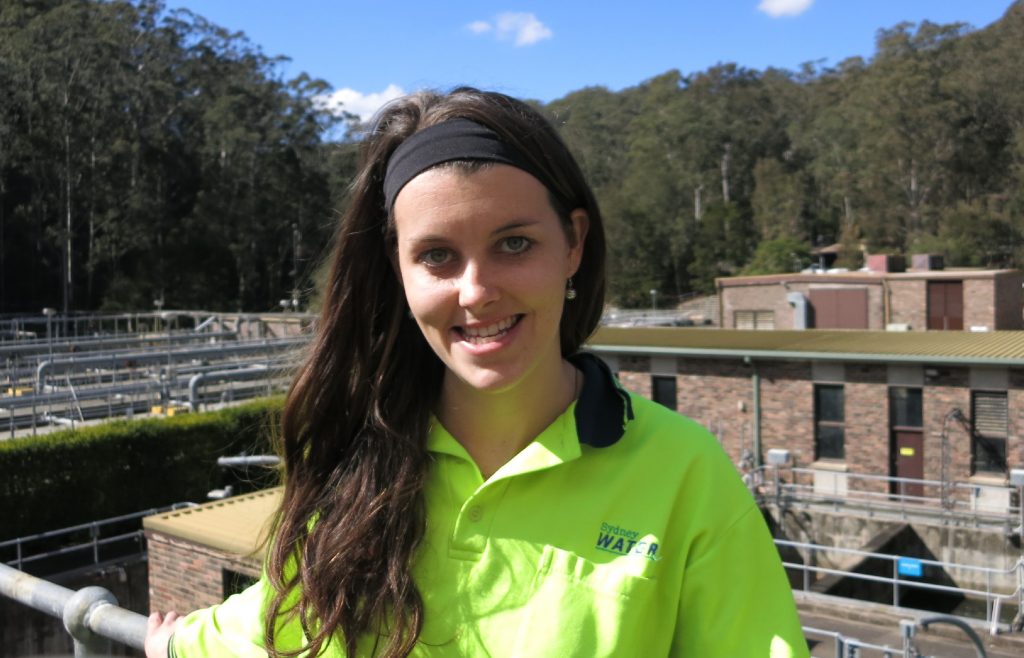 Kathryn Silvester, Engineering Planner, Sydney Water and 2016 Australian Young Water Professional of the Year
Kathryn Silvester, Engineering Planner, Sydney Water and 2016 Australian Young Water Professional of the Year
“With the effects of climate change we are seeing an increased frequency of extreme environmental events and, consequently, the resilience of a system to cope with these events is ever more crucial. To address the challenge of increasing our system resilience with limited funding, water professionals will need to work with those outside the sector to create solutions with multiple benefits to communities.
The city of Copenhagen’s cloudburst management plan aims to do just this by providing dual purpose solutions to extreme wet weather events. Working with communities, key stakeholders and partners, they have created parks, tennis courts and skate parks that are designed to flood in wet weather, acting as retention zones, but also adding value to communities in dry weather.
Diversification of solutions is also essential to create a resilient system. Singapore smartly responded to their lack of natural water resources and high population by investing in a variety of water sources including rainwater, desalination and NEWater (reclaimed water). They are now in a robust position independent of environmental factors.”
The post How should water professionals invest in resilience? appeared first on The Source.
]]>The post Mexico to address water and wastewater management challenges appeared first on The Source.
]]>SUEZ is willing to contribute through its expertise in projects and concessions that offer water, wastewater and waste management solutions to local authorities and industries; while IFC will use its experience of investing in these sectors in a sustainable manner, leveraging its IFC Sustainability Framework, a network of national and international institutions, and effective relationships with national and subnational public authorities.
“The whole water and waste value chain requires very large investments that can only come from a strong and effective collaboration between the public and the private sectors,” said Dimitris Tsitsiragos, Vice President of IFC. “In collaboration with SUEZ and with municipal, state, and federal agencies, our goal is to implement a number of exemplary projects that will have strong impact and serve as demonstration for many more to come.”
The water sector in Mexico poses significant challenges and opportunities. Although the country has abundant water resources in the south, more than half of its population lives in areas considered water-stressed. In addition, insufficient investment in infrastructure and water management issues has turned Mexico into one of the largest water-stressed countries in the world.
In this context, 105 out of the 731 river basins across Mexico have water constraints, and 106 out of the 653 existing aquifers have been severely overexploited. Many of these aquifers represent the main water source for urban settlements and rural communities, as well as farmland. Due to these issues, the water availability has diminished from 18,000 m3 per capita per year in 1950 to 3,900 m3 in 2013, and almost 35 million Mexicans live in water-scarce areas.
“What we signed is an opportunity to implement a new business model combining technical expertise of SUEZ with stability in the asset management with a long-term investor, IFC,” said Jean-Louis Chaussade, CEO of SUEZ.
The post Mexico to address water and wastewater management challenges appeared first on The Source.
]]>The post When is desalination the right choice? appeared first on The Source.
]]>Jonathan Andrews spoke to a select panel to break down some of the more common controversies surrounding desalination, and asks if water scarcity can make desalination plants environmentally, financially and politically feasible
When–if ever–will desalination become economically and politically competitive with other water supply options for thirsty cities?
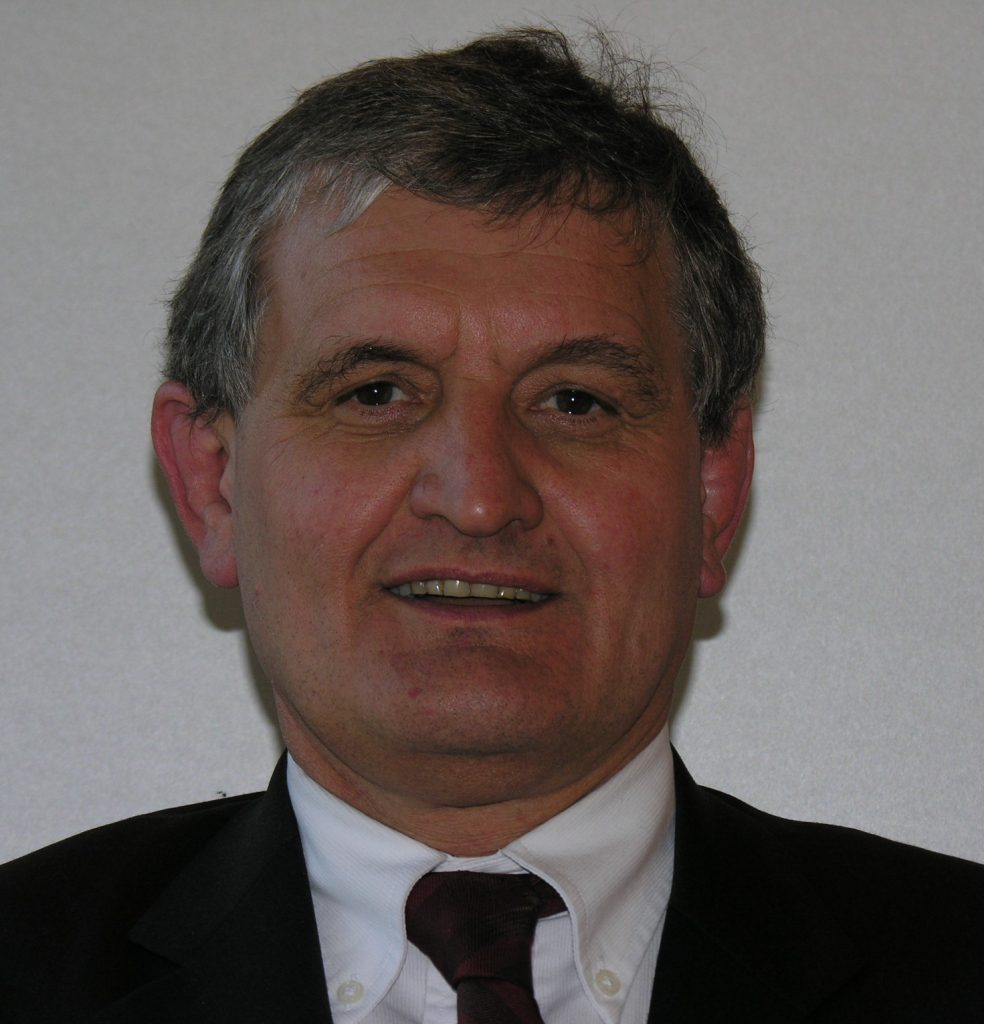 Michel Canet, Business Development Advisor, Veolia Water Technologies
Michel Canet, Business Development Advisor, Veolia Water Technologies
Take Saudi Arabia as an example where thermal multi-stage flash [MSF] plants have been installed for more than 30 years. It is clear that the only economical and political water supply option is to continue to use desalination but the authorities should take into account the availability of new technologies such as multiple- effect distillation [MED] and reverse osmosis [RO], which can be combined. A 15-year-old MSF plant can be replaced by a hybrid plant of MED and RO technology to produce more than double the quantity of water with less electricity and steam consumption.
 Heather Cooley, Co-Director, Water Programme, Pacific Institute
Heather Cooley, Co-Director, Water Programme, Pacific Institute
Desalination is among the most expensive options, and water managers may reduce the output of a desalination plant when demand drops or when less expensive options are available. Because of the fixed costs of the plant, reducing the output can increase the unit cost of the water produced which can further reduce demand or make other supply options even more economically attractive. In response, water managers may temporarily or permanently shut down the desalination plant. This can reduce the variable operating costs associated with the plant but ultimately leave ratepayers to pay off a plant while receiving little to no benefit from it. This would be a disservice to the community and the industry.
 Emilio Gabbrielli, Director, Overseas Business Development, Toray and President of the International Desalination Association (IDA)
Emilio Gabbrielli, Director, Overseas Business Development, Toray and President of the International Desalination Association (IDA)
It already is. If fact, when you consider both desalination per se and advanced reuse, these should be considered as complements or alternatives to mainstream water supply in most situations where water resources planning is done. The technology involved is mature and reliable, and costs are often competitive with traditional treatment processes. In many cases, they are actually already cheaper, not only safer in terms of quality. The value of desalination and advanced water reuse is being recognised more and more, and political interest and support to explore these alternatives is growing fast.
 Denys Neymon, Chief Executive Officer, Treatment Infrastructure and Executive Vice-President, Suez
Denys Neymon, Chief Executive Officer, Treatment Infrastructure and Executive Vice-President, Suez
For coastal cities, desalination is a complementary solution to other water supply systems. It is the best and only solution when no other options are available, and due to its cost of under US$1 per cubic metre, it is always economically and politically competitive, especially for coastal cities in developed countries.
 Shannon McCarthy, Co-Founder and Partner of United4Water and 1st Vice-President, International Desalination Association (IDA)
Shannon McCarthy, Co-Founder and Partner of United4Water and 1st Vice-President, International Desalination Association (IDA)
Desalination is not in competition with dependable conventional water sources. Desalination competes economically and politically with the costs of no freshwater at all or inadequate quantities of freshwater. Desalination can provide a sustainable source of freshwater for coastal cities that have either limited or no dependable freshwater sources. More than 300 million people around the world rely on desalinated water for some or all of their daily needs. Increased efficiency has already achieved substantial reductions, and there is every indication it will continue to do so.
 Adam Scow, California Director, Food & Water Watch
Adam Scow, California Director, Food & Water Watch
Smart water agencies are making great strides in adopting efficient water management practices such as conservation, groundwater cleanup, reuse, and recycling. Desalination is an expensive and speculative option that could drain resources away from these and other more practical solutions. It should only be the option of last resort after all other and better supply options have been fully developed. Desalination will not fix or make up for the many water abuses and blunders that exist in the world today.
 David Zetland, Assistant Professor, Leiden University College
David Zetland, Assistant Professor, Leiden University College
Constantly improving technology means lower costs for desalination, but also lower costs for similar technology like wastewater recycling. Cities interested in saving money should therefore always consider recycling before desalinating water. From a political perspective, this can also be easier, as wastewater is easier to access than salty or brackish water that may be part of fragile ecosystems. Both of these technologies are less efficient than using rain water and cheaper surface and ground sources, of course, so we’re talking about ‘always more competitive, never the most competitive’.
How might desalination cause as many problems as it solves, or indeed solve more problems than it creates?
Canet, Veolia
It is difficult to weigh the social developments of a remote and thirsty region created by the viability of desalinated water versus the environmental problems created by brine rejection, global warming pollution, and water pricing for a low-income community. The only recommendation is that desalination projects should be done after a detailed feasibility study where comparisons between alternative solutions such as wastewater reuse, ground water, or recharged water tables are available for a final decision.
Cooley, Pacific Institute
Poorly planned, sited, or executed desalination projects would create as many or more problems than they solve. Indeed, the siting, building, and operation of desalination facilities are likely to be delayed or halted if local conditions, sentiments and the public interest are not adequately acknowledged and addressed. To help address these issues, the process of designing, permitting, and developing desalination facilities must be transparent and open. Moreover, affected community members should be invited to participate in desalination project planning, implementation, and management during the early stages of the process.
Desalination solves problems; it does not create them. It is an essential part of the water supply in many parts of the world, providing vital freshwater resources to growing populations and economies. It is unique in its ability to provide our thirsty planet with the only new and reliable source of freshwater. As our world deals with increasing water scarcity and the effects of climate change, seawater desalination becomes an ever more important strategy to ensure an adequate and essentially drought-proof supply of freshwater.
Neymon, Suez
Where there is a shortage of resources, desalination is the only solution able to supply water and thus, allow human development. Its outcomes are more positive than the effects resulting from its higher energy consumption compared to conventional solutions, or the discharge of concentrated water (brine) in the sea. In the last 20 years, energy use has significantly fallen. For example, daily energy consumption to supply desalinated water to a family of four is the equivalent to ironing clothes for one hour or using a laptop for a day.
McCarthy, United4Water and IDA
It is difficult to visualise a situation where desalination causes more problems than it solves or fails to solve more problems than it creates. Desalination requires energy, however there is great progress in the use of clean, renewable energy for desalination. The first utility size desalination plant using concentrated solar power (CSP) is under construction in Saudi Arabia. Seawater desalination plants must have dilution methods and outtakes that are carefully and correctly designed to discharge the treated brine at distances and depths that avoid harming the marine environment and marine life. For inland facilities that are desalinating brackish ground water, there is promising ongoing research in chemical and electrical methods of extracting the salt from the resulting brine. These could also be used to reduce brine from seawater desalination.
Scow, Food & Water Watch
Desalination creates many problems. It can be greater than ten times more energy intensive than other supply sources, thus potentially spurring their emission of global warming pollution. Producing water through ocean desalination costs three or more times what it costs to produce water from traditional supplies. It often requires multiple subsidies of both water and electricity to break even, and it entails pricey upfront construction and long-term operation and maintenance costs. Many proposed ocean desalination plants are now planning to rely on ‘once-through’ intake structures that kill fish and other organisms. Further, the disposal of the brine also has the potential to upset our delicate coastal ecosystems.
Zetland, Leiden University College
Desalination adds to supply, thereby reducing water scarcity. If demand is not capped (growth continues; lawns get bigger, and so on), then scarcity will return. The water authority in San Diego is bringing in desalinated water supplies of about 7 percent of total use but spreading US$1 billion of new costs among all customers. The small change in price is unlikely to dampen demand from existing customers or people moving to the area, which means that San Diego will again face water scarcity problems in the future.
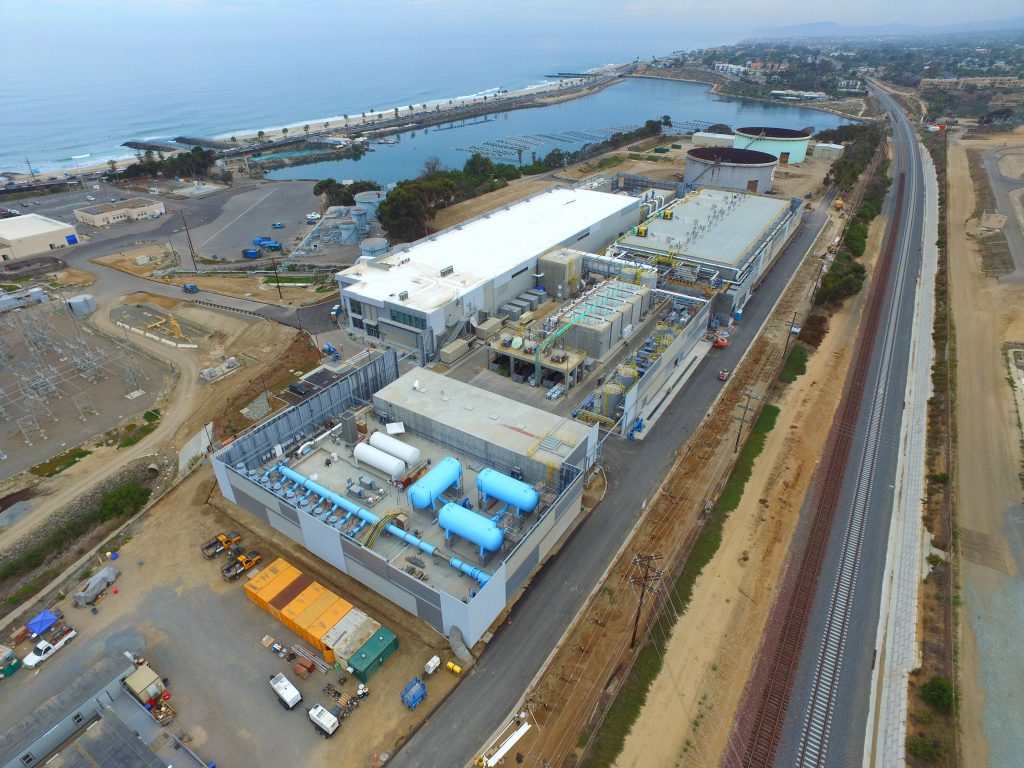
Which beneficiaries should directly underwrite or finance investments in desalination plants, and why?
Canet, Veolia
With energy being the key element in producing desalinated water, it seems normal to consider that large energy producing companies like EDF, ENGIE, ACWA Power, and others should be investors. However, very often the costs of desalinated water is greatly affected by financing constraints and guarantees required by banks, so it could be cheaper to require governments or international financial institutions to give soft loans and/or guarantees to such projects.
Cooley, Pacific Institute
The financing of a desalination plant will depend on the unique circumstances of a given project. As a general rule, all beneficiaries of the desalination plant should pay for a portion of the project. The water users are the major beneficiaries of a project and would therefore likely bear much of the cost. Companies that profit from the project are other possible beneficiaries. Public subsidies are only appropriate in cases where the facilities come with an explicit guarantee of public benefits, such as restoration of ecosystem flows.
Gabbrielli, Toray and IDA
As desalination and reuse have become a mainstream freshwater supply alternative, their underwriting or financing will follow the same pattern as with other freshwater resources. This is clearly the case with municipal water utilities, whether this is done on a direct investment basis or through a form of public-private partnership. What seems to be happening more is that industries are deciding to invest in desalination and reuse within their fences to become independent from the services of the local utility. This is also done to secure its water supplies in case the utility has to cut the supply in a situation of drought, when supply for human consumption takes priority.
Neymon, Suez
Most desalination plants are used for drinking water supply. Therefore the public sector has to underwrite such projects to guarantee delivery and attract contractors. In some projects, the private sector could become involved through a dedicated investment vehicle that will need to be endowed with guarantees to deliver the project, securing its financing. Such guarantees come from the public sector such as land agreements, water purchase agreements, electrical connection agreements, and others.
McCarthy, United4Water and IDA
Financing should be shared between government agencies originating the projects and private sources of finance investing in the construction and operation of the plants. Governments should finance the infrastructure for water distribution and wastewater recovery. Private capital should finance the plants and their supporting facilities. Government contracting and regulatory policies should facilitate this combination.
Scow, Food & Water Watch
Ocean desalination provides a new opportunity for private corporations to own and sell water, creating the possibility that private corporations would rate-gauge thirsty populations. Food & Water Watch values water as a public resource that must be managed by public institutions and not be privatised. A recent Food & Water Watch analysis compared average water rates charged by publicly and privately owned utilities in four US states–California, Illinois, Wisconsin, and New York–and found that privately owned water utilities charge customers significantly higher water rates than their publicly owned counterparts: anywhere from 13 percent to almost 50 percent more.
Zetland, Leiden University College
The users of the water, and in particular the new users of the water should be the underwriters. Economists tend to say that everyone should face the marginal cost of their use, that is the cost of getting another unit, to help them see the real cost of scarcity. Most water utilities charge average costs, which means that people use too much water. Say, for example, you get half your supply from groundwater that costs US$1/m3 and half from desalinated water that costs US$2/m3. Most utilities would sell that water at US$1.50/m3, which does mean that costs match revenues, but also means they are selling US$2 water for US$1.50. It’s much better– from the perspective of efficiency and fiscal security–to charge US$2/m3 on all water. The utility can then send back the ‘profits’ (on groundwater) by reducing fixed charges to customers. This works for all water supply systems, but it’s especially useful for desalination because it’s so expensive.
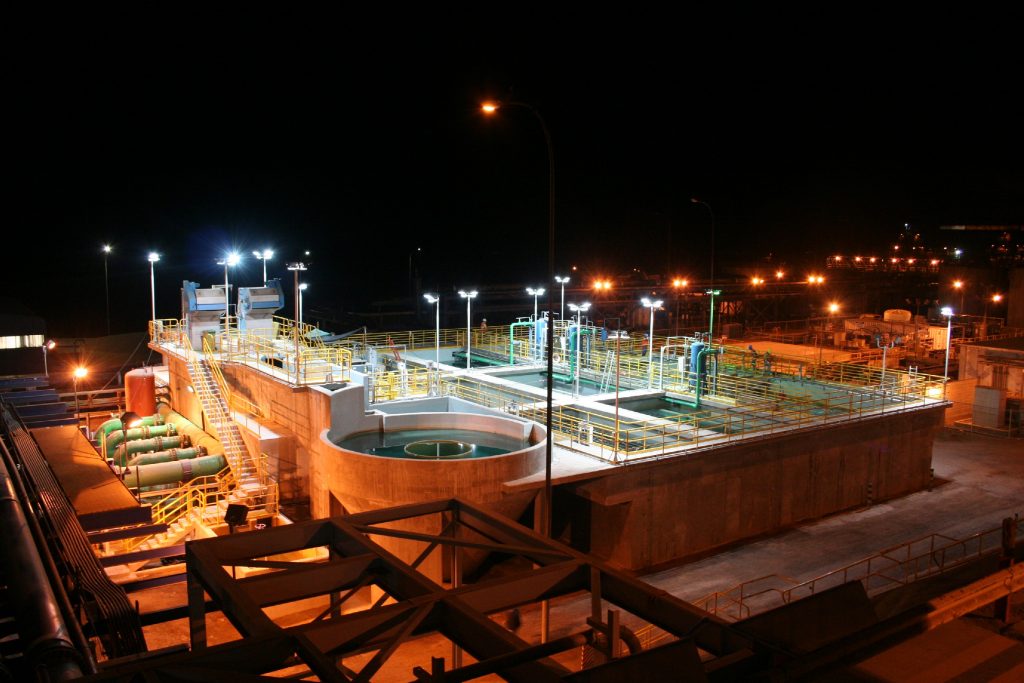
When is small, distributed or large- scale centralised desalination preferable?
Canet, Veolia
A key factor for desalination plants is energy. The drive behind installing a small or a large centralised desalination plant is the availability of energy at a given location. This means that when there is no issue to build a large power plant then a large desalination plant is obvious. However, when you use the grid or use small solar or wind power, then a small plant is better.
Cooley, Pacific Institute
The unit cost of water from small systems is typically more expensive than large systems due to economies of scale. As a result, project developers may build large plants in an effort to capture economies of scale and reduce the unit cost of water; however, this can lead to oversized projects that ultimately threaten its long-term viability. As a general rule, the size of the facility should be determined by the demonstrated need for the water produced. Additional capacity to desalinate water can be added as needed.
Gabbrielli, Toray and IDA
Careful estimates of the costs of distribution associated with the alternative number of plants and sizes have to be looked at in their entirety, and the most economical solution should be chosen. In areas with several small centres within a reasonable number of kilometres, the alternative to provide a centralised desalination plant and then distribute the product by pipe or tank trucks can produce a result similar to that of providing individual small-scale plants. In many cases, the apparent safety of a centralised operation can be offset by the increased reliability of an operation ‘bought’ by the same community, which takes direct responsibility.
Neymon, Suez
From an economic and lower water rates perspective, a large-scale centralised desalination plant is preferable, except if the distance to feed the population is too far, and huge networks and pumping stations are required. Only in isolated villages or regions, is building small plants an acceptable solution, combining them with the use of renewable energies.
McCarthy, United4Water and IDA
Transporting water is expensive. Small, distributed desalination facilities are best suited for the desalination of brackish groundwater. Smaller seawater desalination plants are also appropriate for coastal towns. Large- scale desalination is best suited for seawater desalination for large coastal urban areas or industrial complexes.
Scow, Food & Water Watch
Small is preferable, but only if absolutely necessary and all other options have been exhausted.
Zetland, Leiden University College
Scale should reflect political realities. A smaller plant may serve a single community better than a larger one that drives conflict among several communities sharing it.
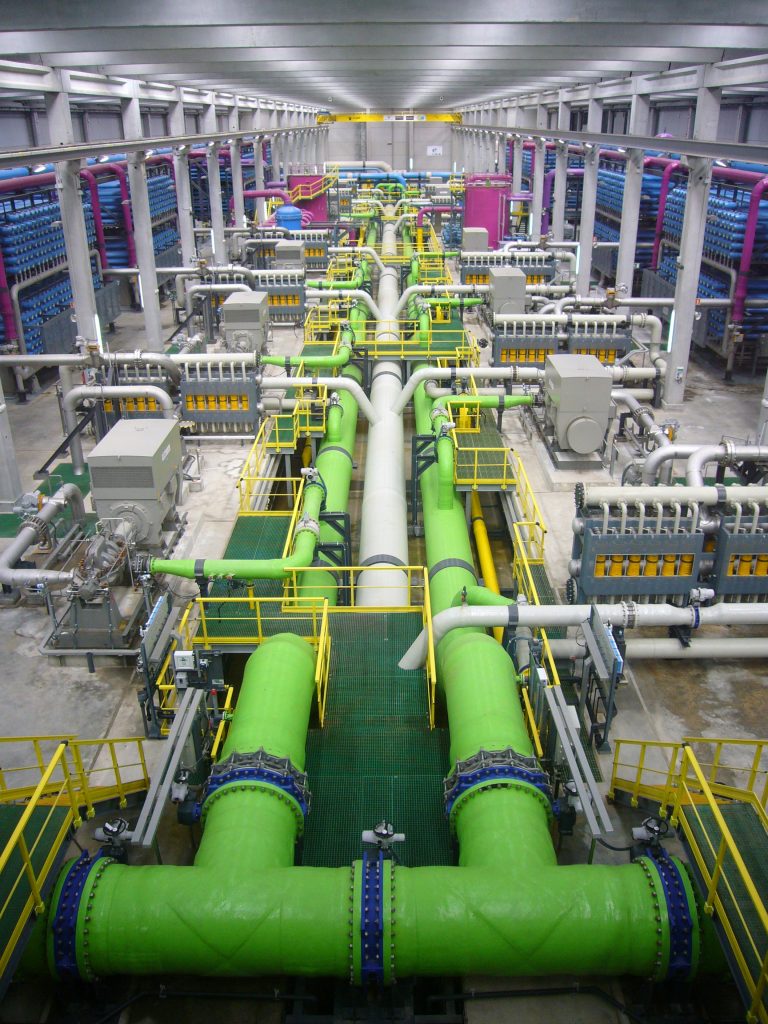
How can desalination best mitigate and address the high energy, cost, and toxic effluent from membrane problems? And what is the best way to reduce the environmental impact of polluted membranes after use?
Canet, Veolia
Firstly developments of new membranes, energy recovery systems and new processes for pretreatment have already addressed the cost and the high-energy consumption for desalinated water. New developments such as forward osmosis and hybrid desalination are going to further reduce costs and energy consumption. What to do with used membranes is indeed an issue but we should consider that membrane life has been considerably increased and it is now standard to change membranes after only eight to nine years. Often those used membranes can be used a second time for a few more years. In addition, recycling companies have not looked at membrane products yet, as the quantities are quite small, but in a few years there may well be a solution and a recycling process found.
Cooley, Pacific Institute
Desalination increases the water supplier’s exposure to energy price variability and greenhouse gas emissions. Some of the most promising research on reducing energy use is focused on alternative desalination technologies, like forward osmosis and membrane distillation; hybrid membrane-thermal desalination; and improved energy recovery devices. While reducing energy use will reduce greenhouse gas emissions, other mitigation strategies include using renewable energy and purchasing carbon offsets. Even renewables have a social, economic, and environmental cost, albeit much less than conventional fossil fuels. Marine impacts of desalination must be understood and mitigated. More research is needed, especially on the long-term impacts. We do, however, know that there are several operational, design, and technological measures available to reduce the marine impacts of open water intakes and brine disposal.
Gabbrielli, Toray and IDA
The high-energy costs of desalination are partly a myth, as by now desalination and reuse often uses less energy than traditional treatment methods or transferring water from farther away. With known technologies like reverse osmosis, there is not much scope for further reduction in energy consumption. Where there is great potential is the increasing use of renewable energy in its several forms for desalination. Luckily desalination normally does not produce problematic wastes, and the concentrate, in the case of seawater desalination, is nothing more than concentrated seawater that can be discharged with practically no environmental effect if the discharge is located and designed correctly.
Neymon, Suez
Energy use is relative, and in the last 20 years, it has significantly fallen. The desalination market is so competitive that the cost of desalination plants has diminished over the years. While it remains a costly process among drinking water treatments, it should be pointed out that the water produced is of exceptional quality. When membrane production capacity is reduced, and they have reached the end of their lifecycle, the best way to discard them is to recycle their components, and incinerate them jointly with domestic waste making them a source of energy generation.
McCarthy, United4Water and IDA
In the last decade, advances in desalination technology have reduced the cost of membrane desalination by 50 percent. Energy is the largest single cost of desalination (44 percent of the total). The reduction means significantly less energy is required. An alternative to fossil fuels is the use of renewable energy, solar or wind, which has no emissions and, after the initial investment, much lower costs. Many regions where desalination is needed have ample sunshine. The newly formed Global Clean Water Desalination Alliance, H2O minus CO2, is promoting the use of renewable energy for desalination. The alliance was launched at the Paris Climate negotiations and aims for 80 percent to 100 percent of new desalination plants and at least 10 percent of old plants to be powered by clean energy by 2035.
Scow, Food & Water Watch
Because there are no ways to truly mitigate these major impacts, and better options exist, desalination should not be pursued in general.
Zetland, Leiden University College
I’d encourage the use of ‘best technology’ by making polluters pay for whatever impacts they are generating.
The post When is desalination the right choice? appeared first on The Source.
]]>The post Aquadvanced® by SUEZ: leading edge networks and energy performance tool appeared first on The Source.
]]>Within the suite there are specific modules to meet each of the water utility needs associated to each of their day-to-day operations;
- Aquadvanced Water Networks: efficient real-time management of water networks
- Aquadvanced Wells: the first solution for the real-time monitoring and optimised operation and maintenance for wells and their pumps
- Aquadvanced Urban Drainage: monitoring and daily management of sewer systems, early detection of flooding episodes. Environmental protection and optimisation of the operations and performance of wastewater assets
- Aquadvanced Energy: real-time energy management and optimisation of pump operations for water distribution networks
Main advantages of Aquadvanced®:
- Reduction of operating costs throughout the water utility
- Real-time management of water and sewer networks
- Optimisation of decision-making to improve the performance of the network
- Helps ensure compliance with current legislation: water quality control
- Facilitates day-to-day operations: centralised programme that is easy to use
Aquadvanced® is a complete solution for the operational needs of the water utility.
The innovative software solution of SUEZ, Aquadvanced® suite, gathers and analyses all the data and turns it into knowledge for the decision-making process, moreover, it is very easy to use. Suite Aquadvanced has made the complex simple designed for operators by operators.
Brought to you by
The post Aquadvanced® by SUEZ: leading edge networks and energy performance tool appeared first on The Source.
]]>